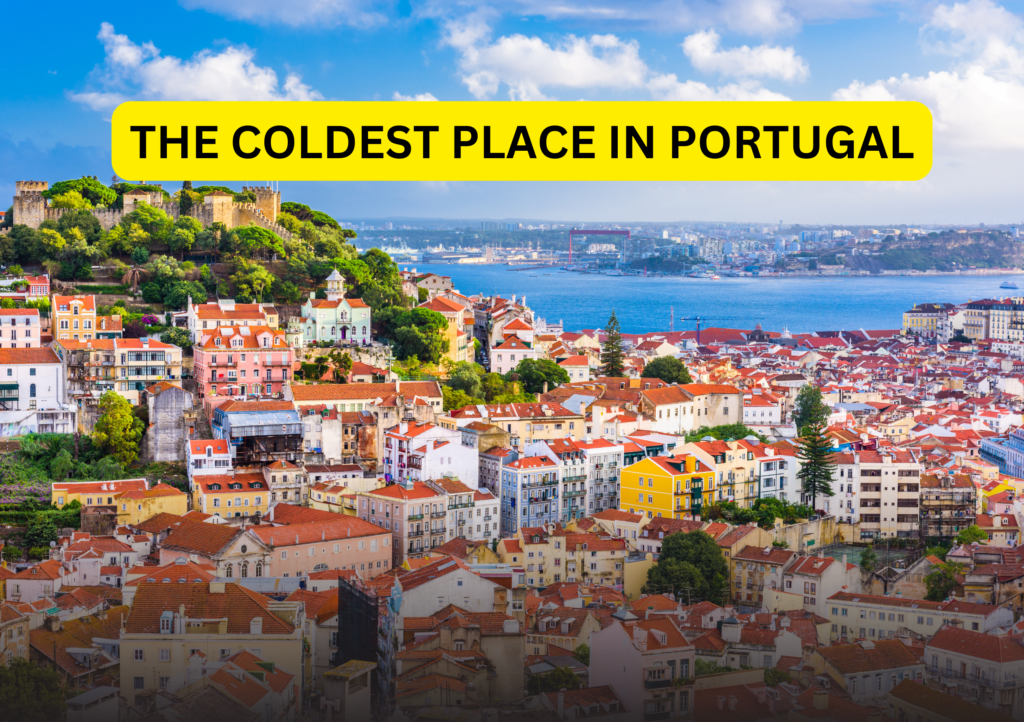Although Portugal is known for its sunny beaches, Mediterranean climate, and friendly people, the country also has areas with extremely cold temperatures. One such area is Gralheira, the coldest place in Portugal, a small village in the Serra do Montemuro mountain range, located in the municipality of Cinfães, district of Viseu. This hidden gem is known as the coldest place in Portugal, where winter temperatures frequently fall below freezing. For visitors looking for a unique winter experience.

Where is the Coldest Place in Portugal?
If you have ever wondered where the coldest place in Portugal is, the answer lies in the picturesque village of Gralheira. Nestled at approximately 1,130 meters above sea level, the coldest place in Portugal stands as the third-highest village in the country. Its high-altitude location significantly influences its climate, making the coldest place in Portugal one of the chilliest regions, especially during the winter months
How Cold Does It Get in Gralheira?
Gralheira’s winters are harsh, with temperatures frequently dropping below freezing, solidifying its reputation as the coldest place in Portugal. Historical weather records indicate that temperatures in the coldest place in Portugal have reached as low as -15°C, making it a true winter wonderland. The coldest month is January, with average minimum temperatures recorded at -3.0°C and maximum temperatures around 7.3°C. However, the real feel in the coldest place in Portugal often drops to -7.0°C due to strong winds and high humidity levels
Why is Gralheira So Cold?
Several factors contribute to Gralheira’s frigid climate:
- High Altitude – The village’s elevation at over 1,100 meters above sea level plays a crucial role in its cold temperatures. As altitude increases, temperatures naturally drop, leading to colder winters.
- Geographical Location – Situated in Serra do Montemuro, Gralheira is exposed to cold air masses from the north, which contribute to its chilly conditions.
- Lack of Urban Heat Effect – Unlike major cities, small villages like Gralheira do not have the “urban heat island” effect. With fewer buildings, vehicles, and human activity, there is less heat retention, making temperatures drop significantly at night.
What to Expect When Visiting Gralheira in Winter?
Be ready for frigid weather, icy scenery, and even the occasional snowfall if you’re considering a winter trip to Gralheira. For those who love cold-weather adventures, the village becomes a winter wonderland. What you can encounter is as follows:
Snowy Landscapes – While Portugal is not famous for snowfall, Gralheira is one of the few places where you can witness snow-covered fields and icy roads.
Chilly Mornings and Evenings – The temperature can drop significantly at night, so layering up with warm clothing is essential.
Winter Activities – While there are no major ski resorts, visitors can enjoy hiking and sightseeing amidst the frosty mountain scenery.
Cozy Mountain Cottages – Stay in a traditional Portuguese mountain home and enjoy the warmth of a fireplace while sipping on a hot drink.
How Does Gralheira Compare to Other Cold Places in Portugal?
Portugal has several regions known for their cold temperatures, but Gralheira stands out due to its extreme lows. Here’s how it compares to other cold locations:
- Guarda – Known as the highest city in Portugal, Guarda experiences cold winters with temperatures often reaching freezing levels. However, Gralheira is considered even colder due to its isolated mountain location.
- Serra da Estrela – Home to Portugal’s only ski resort, Serra da Estrela also experiences harsh winters, but its cold is more associated with snowfall than extreme temperatures.
- Bragança – Located in northeastern Portugal, Bragança sees cold winters, but Gralheira’s higher altitude gives it an edge in terms of lower temperatures.
Why Visit Gralheira?
While many travelers flock to Portugal’s beaches and vibrant cities, Gralheira offers a unique and off-the-beaten-path experience. Here’s why you should consider a visit:
- Authentic Portuguese Village Life – Experience the charm of a small mountain village untouched by mass tourism.
- Breathtaking Natural Beauty – The Serra do Montemuro region is filled with scenic landscapes, hiking trails, and panoramic viewpoints.
- Winter Wonderland Experience – If you love winter and cold weather, Gralheira is one of the best places in Portugal to embrace the season’s magic.
- Delicious Local Cuisine – Enjoy warm and hearty Portuguese dishes, such as stews, roasted meats, and locally produced cheeses, which are perfect for the cold weather.
Best Time to Visit Gralheira
The best time to visit Gralheira depends on what you want to experience:
- Winter (December to February) – The coldest months, ideal for experiencing freezing temperatures, frost, and occasional snowfall.
- Spring (March to May) – A great time to witness the transition from winter to spring, with cool temperatures and blooming flowers.
- Summer (June to August) – While still cooler than other parts of Portugal, summer offers pleasant weather for hiking and outdoor exploration.
- Autumn (September to November) – The season of golden landscapes and crisp mountain air, perfect for a relaxing getaway.
Conclusion: Coldest Place in Portugal
Gralheira is undoubtedly one of the coldest places in Portugal, offering a stark contrast to the country’s typically warm and sunny reputation. Whether you are looking for an offbeat winter travel destination or simply curious about Portugal’s colder side, this village in Serra do Montemuro is worth exploring. Its breathtaking scenery, unique climate, and authentic charm make it a fascinating spot for travelers who appreciate the beauty of winter.
So, if you are planning a trip to Portugal and want to experience something different, why not take a detour to Gralheira? Bundle up, enjoy the crisp mountain air, and embrace the chill of Portugal’s coldest village!
For more information on visa and travel updates, click here.

